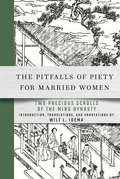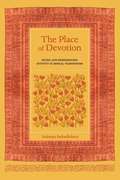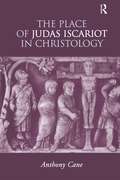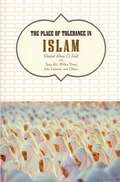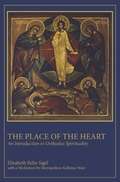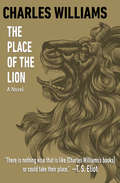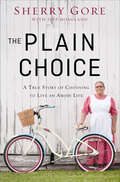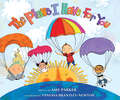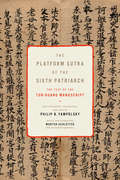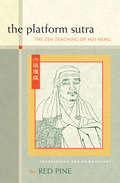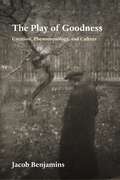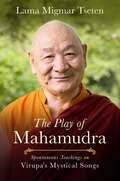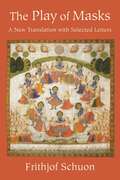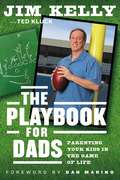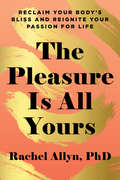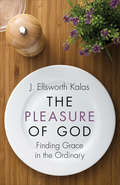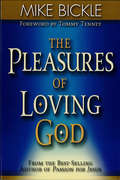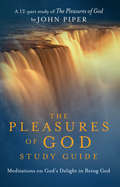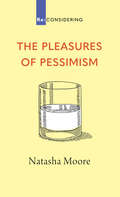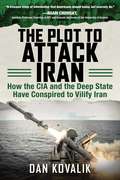- Table View
- List View
The Pitfalls of Piety for Married Women: Two Precious Scrolls of the Ming Dynasty
by Wilt L. IdemaThe Pitfalls of Piety for Married Women shows how problematic the practice of Buddhist piety could be in late imperial China. Two thematically related "precious scrolls" (baojuan) from the Ming dynasty, The Precious Scroll of the Red Gauze and The Precious Scroll of the Handkerchief, illustrate the difficulties faced by women whose religious devotion conflicted with the demands of marriage and motherhood.These two previously untranslated texts tell the stories of married women whose piety causes them to be separated from their husbands and children. While these women labor far away, their children are cruelly abused by murderous stepmothers. Following many adventures, the families are reunited by divine intervention and the evil stepmothers get their just deserts. While the texts in The Pitfalls of Piety for Married Women praise Buddhist piety, they also reveal many problems concerning married women and mothers.Wilt L. Idema's translations are preceded by an introduction that places these scrolls in the context of Ming dynasty performative literature, vernacular literature, and popular religion. Set in a milieu of rich merchants, the texts provide a unique window to family life of the time, enriching our understanding of gender during the Ming dynasty. These popular baojuan offer rare insights into lay religion and family dynamics of the Ming dynasty, and their original theme and form enrich our understanding of the various methods of storytelling that were practiced at the time.
The Place Called Heaven
by James T. JeremiahThis book clearly explains how to get to Heaven, and what it will be like once you are there.
The Place of Devotion
by Sukanya SarbadhikaryA free ebook version of this title is available through Luminos, University of California Press' new open access publishing program for monographs. Visit www.luminosoa.org to learn more. Hindu devotional traditions have long been recognized for their sacred geographies as well as the sensuous aspects of their devotees' experiences. Largely overlooked, however, are the subtle links between these religious expressions. Based on intensive fieldwork conducted among worshippers in Bengal's Navadvip-Mayapur sacred complex, this book discusses the diverse and contrasting ways in which Bengal-Vaishnava devotees experience sacred geography and divinity. Sukanya Sarbadhikary documents an extensive range of practices, which draw on the interactions of mind, body, and viscera. She shows how perspectives on religion, embodiment, affect, and space are enriched when sacred spatialities of internal and external forms are studied at once.
The Place of Hooker in the History of Thought (Routledge Revivals)
by Peter MunzFirst Published in 1952, The Place of Hooker in the History of Thought unravels the historical background to some of Richard Hooker’s leading ideas. The volume throws light on his ideas by a clear appreciation of the philosophical issues he raised and the difficulties he had to face when he embraced the cause of Thomism in Elizabethan England. Peter Munz discusses themes like Hooker’s debt to St. Thomas, Hooker and Marsilius of Padua, Hooker’s historical sense, Hooker and Aristotle and Plato, Hooker and Locke, to determine his place in the history of thought. This book will be of interest to scholars and researchers of Philosophy, Religion, Theology, Political Thought and Political Philosophy.
The Place of Judas Iscariot in Christology
by Anthony CaneExploring the significance of Judas Iscariot for Christian theology and the difficult issues surrounding Judas, Anthony Cane shows that focusing on the tension between providential and tragic interpretations of Judas in the New Testament and in subsequent writing about Judas, is the key to understanding his significance. Building on the work of Karl Barth and Donald MacKinnon, Cane's argument sheds light not simply on the way Judas is understood, but on the way Jesus and the whole economy of salvation are understood. This book also highlights implications for the way in which issues relating to anti-Semitism and evil and suffering are most effectively explored.
The Place of Tolerance in Islam
by Khaled Abou El FadlKhaled Abou El Fadl, a prominent critic of Islamic puritanism, leads off this lively debate by arguing that Islam is a deeply tolerant religion. Injunctions to violence against nonbelievers stem from misreadings of the Qur'an, he claims, and even jihad, or so-called holy war, has no basis in Qur'anic text or Muslim theology but instead grew out of social and political conflict.Many of Abou El Fadl's respondents think differently. Some contend that his brand of Islam will only appeal to Westerners and students in "liberal divinity schools" and that serious religious dialogue in the Muslim world requires dramatic political reforms. Other respondents argue that theological debates are irrelevant and that our focus should be on Western sabotage of such reforms. Still others argue that calls for Islamic "tolerance" betray the Qur'anic injunction for Muslims to struggle against their oppressors.The debate underscores an enduring challenge posed by religious morality in a pluralistic age: how can we preserve deep religious conviction while participating in what Abou El Fadl calls "a collective enterprise of goodness" that cuts across confessional differences?With contributions from Tariq Ali, Milton Viorst, and John Esposito, and others.From the Trade Paperback edition.
The Place of the Heart
by Elisabeth Behr-SigelIn this introductory study, the author describes the basic essential elements of Orthodox spirituality "six great currents which meet, mix together and perpetuate themselves in the vast river which is the spiritual tradition of the Church": 1) the spiritual element, the Psalms and the Gospels; 2) the primitive Christian element; 3) the Hellenistic intellectual element; 4) the primitive monastic element; 5) the liturgical element; and, 6) the contemplative element. Ms. Behr-Sigel guides the reader along the road of silence toward that absolute center which is only accessible through sacrifice. This road is the specific path of the "lay monk," but it is also for all baptized people who are called to adapt it to the needs of modern man "who is drowning in a sea of noise and meaningless clatter."
The Place of the Lion: A Novel
by Charles WilliamsOne man must save the human race from total destruction when a small British village is invaded by a terrifying host of archetypal creatures released from the spiritual world In the small English town of Smetham on the outskirts of London, a wall separating two worlds has broken down. The meddling and meditations of a local mage, Mr. Berringer, has caused a rift in the barrier between the corporeal and the spiritual, and now all hell has broken loose. Strange creatures are descending on Smethem—terrifying supernatural archetypes wreaking wholesale havoc, destruction, and death. Some residents, like the evil, power-hungry Mr. Foster, welcome the horrific onslaught. Others, like the cool and intellectual Damaris, refuse to accept what her eyes and heart tell her until it is far too late. Only a student named Anthony, emboldened by his unwavering love for Damaris, has the courage to face the horror head on. But if he alone cannot somehow restore balance to the worlds, all of humankind will surely perish in the impending apocalypse. An extraordinary metaphysical fantasy firmly based in Platonic ideals, The Place of the Lion is a masterful blending of action and thought by arguably the most provocative of the University of Oxford&’s renowned Inklings—the society of writers in the 1930s that included such notables as C. S. Lewis, J. R. R. Tolkien, and Owen Barfield. With unparalleled imagination, literary skill, and intelligence, the remarkable Charles Williams has created a truly unique thriller, a tour de force of the fantastic that masterfully engages the mind, heart, and spirit.
The Places That Scare You: A Guide to Fearlessness in Difficult Times
by Pema ChodronWe always have a choice, Pema Chödrön teaches: We can let the circumstances of our lives harden us and make us increasingly resentful and afraid, or we can let them soften us and make us kinder. Here Pema provides the tools to deal with the problems and difficulties that life throws our way. This wisdom is always available to us, she teaches, but we usually block it with habitual patterns rooted in fear. Beyond that fear lies a state of openheartedness and tenderness. This book teaches us how to awaken our basic goodness and connect with others, to accept ourselves and others complete with faults and imperfections, and to stay in the present moment by seeing through the strategies of ego that cause us to resist life as it is.
The Places You Go: Caring for Your Congregation Monday through Saturday
by Urias BeverlyTo be effective, pastors must minister in a variety of settings. Each setting--whether hospital room, jail, nursing home, funeral home, or even in the pastor's study--is different. Each setting brings its own unique dilemmas and rules. The pastor's authority will vary according to the setting as will the expectations of the pastor by the staff and parishioners in each setting. The pastor must be comfortable in a variety of settings in order to build Christ-centered relationships, but comfort comes only with familiarity and some settings can be intimidating or even frightening. Bailing a parishioner out of jail in the middle of the night presents challenges to ministry as does helping parishioners plan their loved one's funeral after a suicide. Context matters, and Urias Beverly gives the reader concrete steps and illustrations on how to artfully minister in a variety of common settings as well as how to cope with the dilemmas pastors face in facilitating ministry in these settings.
The Plain Choice: A True Story of Choosing to Live an Amish Life
by Sherry Gore Jeff HoaglandRaised in a broken family and emotionally overlooked, Sherry Gore grew up without a solid foundation, a prisoner of her own poor choices, and at times without hope. A series of terrible mistakes left her feeling wrecked and alone and a sudden tragedy threw Sherry into an emotional tailspin too powerful to escape.Sherry hangs by a thread, unable to see how she can go on living, until it happens: on a morning of no particular significance, she walks into a church and BAM the truth of Jesus&’ forgiving love shatters her world and cleaves her life in two: She goes to bed stunned; she wakes up a Christian.Unwilling to return to the darkness of her former life, Sherry attacks her faith head on. Soon the life Sherry Gore remakes for herself and her children as she seeks to follow the teachings of the Bible features head coverings, simple dress, and a focus on Jesus Christ. Only then does she realize, in a fit of excitement, that there are others like her. They are called Amish and Mennonite, and she realizes she has found her people.The plain choice that Sherry makes is not easy – and life still brings unexpected pain and heartache - but it changes everything for her, as she becomes one of the few people on earth to have successfully joined the Amish from the outside. She has found her place. And her story proves that one can return from the darkest depths to the purest light with the power of God.
The Plans I Have For You
by Amy ParkerThe Plans I Have for YOU! combines playful rhyming text written by bestselling children&’s book author Amy Parker with whimsical illustrations by award-winning artist Vanessa Brantley-Newton to create a book that inspires readers of all ages to dream about their future. God has great plans for each and every one of us, and this book encourages children to think about the talents that make them special and will help them imagine how God may use our unique traits to make the world a better place.
The Platform Sutra of the Sixth Patriarch: The Text of the Tun-Huang Manuscript (Translations from the Asian Classics #No. 76)
by Philip B. YampolskyDating back to the eighth century C.E., the Platform Sutra of the Sixth Patriarch is a foundational text of Chan/Zen Buddhism that reveals much about the early evolution of Chinese Chan and the ideological origins of Japanese Zen and Korean Son. Purported to be the recorded words of the famed Huineng, who was understood to be the Sixth Patriarch of Chan and the father of all later Chan/Zen Buddhism, the Platform Sutra illuminates fundamental Chan Buddhist principles in an expressive sermon that describes how Huineng overcame great personal and ideological challenges to uphold the exalted lineage of the enlightened Chan patriarchs while realizing the ultimate Buddhist truth of the original, pure nature of all sentient beings.Huineng seems to reject meditation, the value of good karma, and the worship of the buddhas, conferring instead a set of "formless precepts" on his audience, marked by embedded notes in the text. In his central message, an inherent, perfect buddha nature stands as the original true condition of all sentient beings, which people of all backgrounds can experience for themselves. Philip Yampolsky's masterful translation contains extensive explanatory notes and an edited, amended version of the Chinese text. His introduction critically considers the background and historical setting of the work and locates Huineng's place within the history and legends of Chan Buddhism. This new edition features a foreword by Morten Schlütter further situating the Platform Sutra within recent historical research and textual evidence, and an updated glossary that includes the modern pinyin system of transcription.
The Platform Sutra: The Zen Teaching of Hui-neng
by Red PineThe Platform Sutra occupies a central place in Zen (Ch'an) Buddhist instruction for students and spiritual seekers worldwide. It is often linked with The Heart Sutra and The Diamond Sutra to form a trio of texts that have been revered and studied for centuries. However, unlike the other sutras, which transcribe the teachings of the Buddha himself, The Platform Sutra presents the autobiography of Hui-neng, the controversial 6th Patriarch of Zen, and his understanding of the fundamentals of a spiritual and practical life. Hui-neng's instruction still matters - the 7th-century school of Sudden Awakening that he founded survives today, continuing to influence the Rinzai and Soto schools of contemporary Zen.Red Pine, whose translations of The Heart Sutra and The Diamond Sutra have been celebrated and widely received, now provides a sensitive and assured treatment of the third and final sutra of the classic triumvirate. He adds remarkable commentary to a translation that, combined with the full Chinese text, a glossary, and notes, results in a Mahayana masterpiece sure to become the standard edition for students and seekers alike.
The Play of Goodness: Creation, Phenomenology, and Culture (Perspectives in Continental Philosophy)
by Jacob BenjaminsOne of the enduring claims in the Christian tradition is that creation is good. Given the diversity of experience and the abundance of suffering in the world, however, such an affirmation is not always straightforward. The Play of Goodness provides a phenomenology of creation’s goodness that clarifies the ongoing relevance of the doctrine today. It argues that what is “good” about creation is not synonymous with a confession of faith and does not require an overly optimistic disposition, but instead appears within diverse and often surprising circumstances.Alongside original contributions to French phenomenology and creation theology, The Play of Goodness counterbalances a tendency in continental philosophy to focus on negative phenomena. By developing the philosophical concept of a prelinguistic experience of goodness, the book identifies a quality of goodness that is integral to the place in which we find ourselves. It also articulates shared points of contact among people in an increasingly polarized world, while demonstrating that distinctly theological concepts do not need to be presented in opposition to secular, agnostic, or atheist perspectives in order to be relevant. Benjamins develops an account of creation’s goodness that has the potential to animate an abiding affection for one’s place, accentuate our reasons to care for it, and confirm that what happens in our lives is of genuine significance.
The Play of Mahamudra: Spontaneous Teachings on Virupa's Mystical Songs
by Lama Migmar TsetenEssential commentary on the spontaneous mystical songs of the Indian Buddhist rebel-saint Virupa.In this collection, renowned Tibetan Buddhist teacher Lama Migmar Tseten provides essential commentary on the mystical songs of the Indian Buddhist rebel-saint Virupa. One of the most celebrated tantric masters of Buddhist India, Virupa&’s songs describe his realization of mahamudra, the ultimate nature of reality. Intimate and highly engaging, The Play of Mahamudra unpacks these songs with meticulous clarity, making Virupa&’s insights accessible to modern readers. &“This new collected edition of Khenpo Migmar Tseten&’s Play of Mahamudra volumes constitutes a veritable treasure for all who are deeply engaged on the path to enlightenment. Khenpo Migmar&’s translation of Mahasiddha Virupa&’s Treasury of Dohas and of Sachen Kunga Nyingpo&’s Praise to Virupa makes us intimately familiar with the essence of these root texts, and his elucidation of the Dohas offers us a deep and clear understanding of their core meaning. Anyone who truly contemplates on Mahasiddha Virupa&’s words is certain to attain realization.&” —His Holiness the Sakya Triche
The Play of Masks
by Frithjof SchuonThis late work of Frithjof Schuon represents a general survey of his metaphysical perspective, which is that of the Sophia perennis, or &“perennial wisdom&” found at the heart of the world&’s religions. This new edition of The Play of Masks features a fully revised translation from the French original as well as over 50 pages of new material, including previously unpublished selections from the author&’s letters and other private writings. Also included is an editor&’s preface, extensive editor&’s notes, a glossary of foreign terms and phrases, an index, and biographical notes. Composed of short independent treatises, this book presents readers with fundamental keys for understanding the nature of God, the world, and the human situation. Throughout his writings, Schuon emphasizes the centrality of three elements: Truth, Way, and Virtue. The Truth is what we must know; the Way is what we must do; Virtue is what we must love, become, and be.
The Playbook for Dads: Parenting Your Kids In the Game of Life
by Jim Kelly Dan Marino Ted KluckOn the football field NFL great Jim Kelly was a strong-armed passer, leading his team to victory after victory. In THE PLAYBOOK FOR DADS he passes principles instead of footballs, still using his talent to lead men, but now he leads them to greatness as fathers, in his view the world's most important job. With an emphasis on preparation, hard work and perseverance, Kelly tackles such essential issues as respect, character, accountability and spiritual discipline. From commitment and courage to honesty and humility, Kelly's lessons-learned on and off the field- guide men striving to be the fathers God designed them to be - so their children can grow to be everything they are meant to be. Conversational and refreshingly honest, Jim challenges fathers to work hard, pray for their children often, love their wives and implement these principles. Both practical and inspirational this is Jim Kelly coaching every dad how to be the star quarterback for the home team-his family.
The Pleasure Is All Yours: Reclaim Your Body’s Bliss and Reignite Your Passion for Life
by Rachel AllynReconnect to your inner sense of pleasure and joy through embodiment practices, which put you in touch with the natural wisdom of your body and enhance your ability to connect with others. In this time of increased fatigue, loneliness, and anxiety, disconnection from our bodies and from each other is at the core of our personal pain and our collective suffering. Women in particular are rewarded for, and expected to participate in self-denial. By weaving together historical and cultural commentary, humorous and poignant anecdotes, and experiential tools backed by science, The Pleasure Is All Yours is a step-by-step guide to help you release barriers to receiving life&’s pleasures and deeper connections with others. In this timely guide, holistic psychologist, relationship and sex therapist, and yoga teacher Dr. Rachel Allyn introduces bodyfulness, an embodiment method she developed to help you to awaken into your body's own capacity for healing and deeper connection. Allyn explains how bodyfulness can connect you to four essential and overlooked types of pleasure—sensual, playful, lively, and erotic— which overlap in many ways, and helps you identify what can inspire your own pleasure in each category. Through bodyful activities such as breathing exercises, mindfulness, yoga, auditory release, and dynamic movements, this book helps you reunite with your inherent wisdom and soulful delight.
The Pleasure of God: Finding Grace In The Ordinary
by J. Ellsworth KalasHow can anything be ordinary if we find the glory of God there? <P><P>Whatever might be said of life's most thrilling or transformative moments, most of our time is spent in ordinary things. We spend a third of our lives sleeping. In our adult lives, perhaps a quarter to a third of each week is spent at work. And then there's more of the common stuff: eating, waiting in line, bathing, getting dressed, and watching TV. So it is that our seventy, eighty, or ninety years go by in common ways, and we have no idea where they've gone. <P><P>Is there glory in any of this? Where is the abundant life of which Jesus spoke? In this inspiring new work, J. Ellsworth Kalas says that the glory is found not just in the ecstasy of love or victory but in all of life, whether ecstatic or ordinary. Kalas believes it is possible to live with such joy and gladness of hearts that we find our ordinary lives graced by the pleasure of God. He offers a guide to spiritual contentment in the midst of busy lives, showing us the meaning in those seemingly small aspects of every day.
The Pleasure of Loving God: A Call to Accept God's All-Encompassing Love for You
by Mike BickleHere’s an ultimate portrait of a loving Father, one to whom we can come for a fresh supply of truth and beauty, day by day. In the process, we’ll awaken a fervent devotion to our heavenly Lord. As we employ the Great Commission in our daily lives, we also discover the joy and pleasure of being a vehicle through whom Christ’s own prayers are lived out in the world. Prepare to encounter: God--His awesome, loving presence in your daily life God’s Power--His active, supernatural role in your daily life Your True Identity in God--His view of you A Fresh Awakening and Understanding of God’s Majesty--His plans to bring you to new heights of joy and peace that you never thought possible The Pleasures of Loving God is a call to accept God’s all-encompassing love for you, something that is already yours, not anything that you have to earn or win.
The Pleasures of God DVD Study Guide
by Desiring GodFind the Source of True SatisfactionIn this DVD version of his landmark book, The Pleasures of God, John Piper fully discusses the question: "What brings delight to the happiest Being in the universe?" The answer is crucial to joyful Christian maturity, because it's by knowing what makes God glad that we can drink deeply--and satisfyingly--from the only well that offers living water. In ten sessions, Piper teaches on: * The Worth and Excellency of God's Soul * Our Pleasure in God's Well-Placed Pleasures * God's Pleasure in His Eternal Son * God's Pleasure in the Display of His Glory * God's Pleasure in All That He Does * God's Pleasure in All of Creation * God's Pleasure in Election * God's Pleasure in Bruising His Son What followers of Jesus need now, more than anything else, is to know and love--behold and embrace--the great, glorious, sovereign, happy God of the Bible. Recorded in HD with subtitles in English, these video sessions are ideal for use in adult and youth Sunday school classes, small groups, retreats, classrooms, and families. To get the most from this resource, use it along with The Pleasures of God DVD Study GuideFrom the Trade Paperback edition.
The Pleasures of God: Meditations on God's Delight in Being God
by John PiperBeginning where the foundational truth of Desiring God left off, that "God is most glorified in us when we are most satisfied in Him," this expanded rerelease of another classic by John Piper will further explore a life-changing essential -- "We will be most satisfied in God when we know why God himself is most satisfied in God." Fully understanding the joy of God will draw the reader into an encounter with His overflowing, self-replenishing, all-encompassing grace -- the source of living water that all Christians desire to drink. The Pleasures of God will again put God at the center of Creation and leave the reader very satisfied in Him.Be Most Satisfied in God... Because GOD Is Most Satisfied in God. You don't truly know someone until you know what makes him happy. Our pleasure is the measure of our character. So it is with God. We can only know the greatness of His glory, if we know what makes Him glad. Therefore we must understand "the pleasures of God." This is not a book about you. It's about the One you were made for--God Himself. In this theological tour de force, pastor John Piper navigates the biblical evidence to help us see and savor what the pleasures of God show us about Him, so that we might become like the One we behold. What the church and world need today, more than anything else, is to know and love--behold and embrace--the great, glorious, sovereign, happy God of the Bible.From the Trade Paperback edition.
The Pleasures of Pessimism (Re: CONSIDERING)
by Natasha MooreRe:CONSIDERING invites you to look at what’s familiar from an unfamiliar angle. To consider how we consider things – and how to do it better.Pandemic, supervolcano, late capitalism, transhumanism, populism, cancel culture, the post-antibiotic age, the gig economy, the surveillance state, the cascading effects of climate change …Whatever the specifics, do you ever feel like things are going off the rails - or are just about to?If you’ve read the news, watched a zombie movie, or gotten into an argument on Twitter lately, the answer is probably yes.And you’re not alone.What makes us such apocaholics?What’s so appealing about Armageddon? What are the pleasures - and also the perils of our pessimism?
The Plot to Attack Iran: How the CIA and the Deep State Have Conspired to Vilify Iran
by Dan Kovalik* “Spectacular!” * –Oliver StoneThe world has a lot of questions about the current state of affairs between the United States and Iran… How has the US undermined democracy in Iran? Is Iran really trying to develop nuclear weapons? How has US waged a terror campaign against Iran for years? How is it that the US and Israel, rather than Iran, are destabilizing the Middle East? How has Iran helped the US in the war on terror?In The Plot to Attack Iran, critically acclaimed author Dan Kovalik exposes what Americans have known about the Islamic Republic is largely based on propaganda. The 1953 coup that deposed the democratically-elected prime minister for a US-selected shah? Sold to average American citizens as a necessity to protect democracy and guard against communism. In truth, it was America’s lust for Iranian oil and power that installed the tyrannical shah. The Iranian hostage crisis that miraculously ended with Ronald Reagan’s inauguration as president? Evidence shows that Reagan negotiated with the hostage-takers to hold the hostages until his inauguration.Iran, once known as Persia, is one of the oldest nations on earth. It has a rich history and a unique culture, and is bordered by seven countries, the Caspian Sea, and the Persian Gulf. It is literally the intersection of many countries and many worlds. It has a population of eighty million people and occupies a space nearly the size of Alaska, the largest US state; it is the seventeenth largest country in the world. Over the past century, Iran’s greatest resource, and at the same time its greatest curse, has been its oil. For it is oil that has caused the United States and other world powers to systematically attempt to destroy Iran. After a greedy Iranian monarch sold all of Iran’s oil and natural gas reserves to a British financier in 1901, the West started just one of its many invasions and exploitations of the country.Using recently declassified documents and memos, as well as first-hand experience of the country, critically-acclaimed author Dan Kovalik will change the way you think about Iran, and especially what you think of US interference there. Learn how the United States vilifies its enemies, and accuses them of unspeakable horror to mask its own terrible crimes. Not only does the illuminating and important The Plot to Attack Iran delve into the current incendiary situation, but it also predicts what could happen next, and what needs to be done before it is too late.
